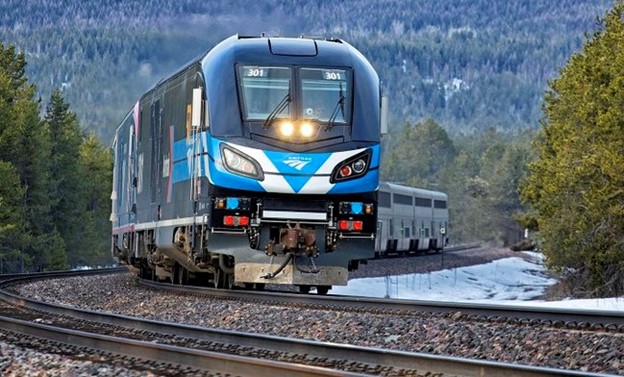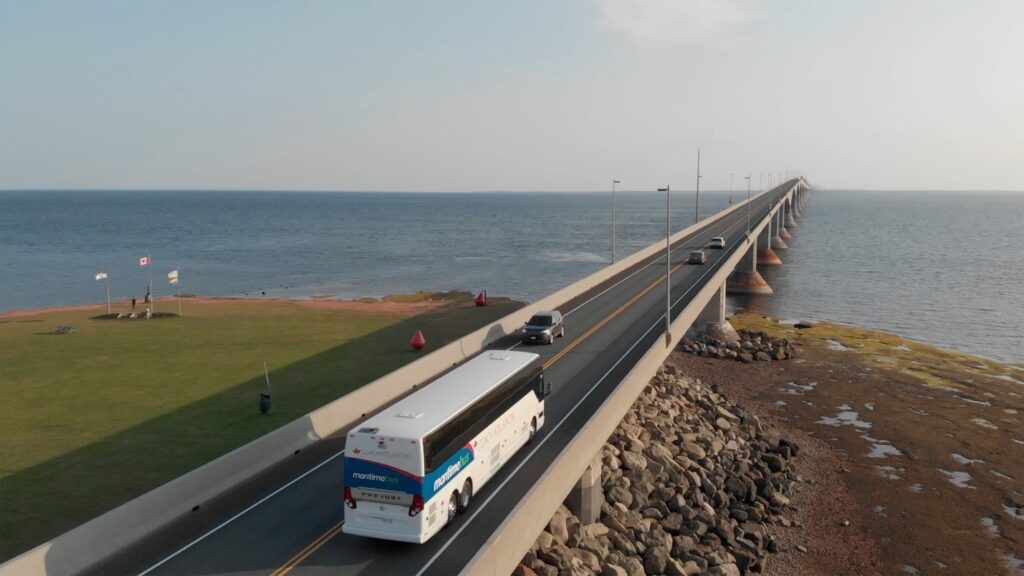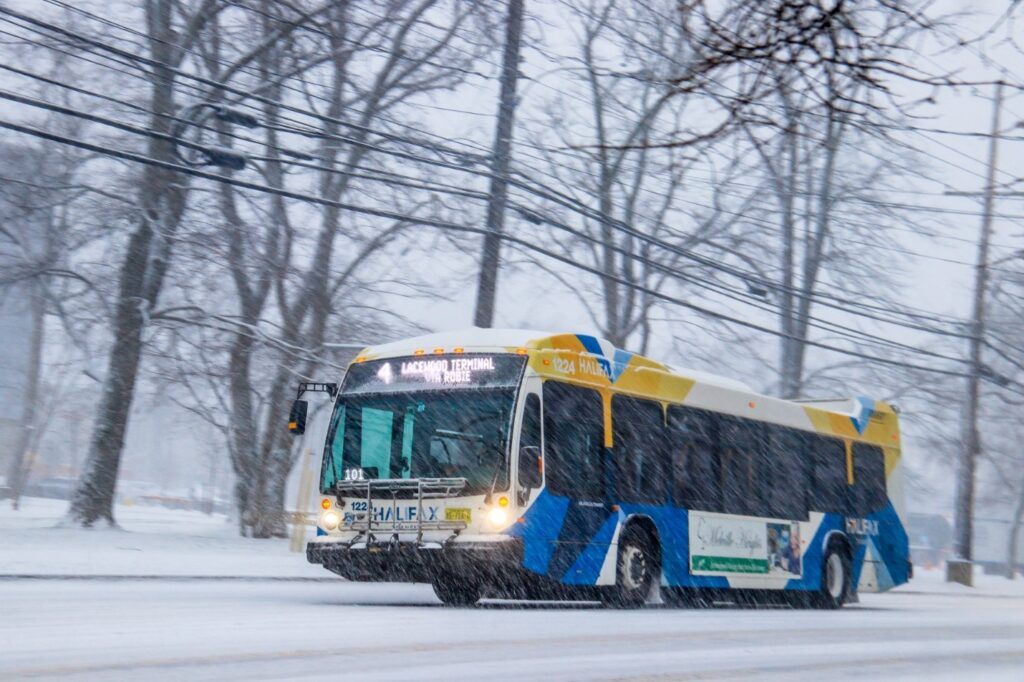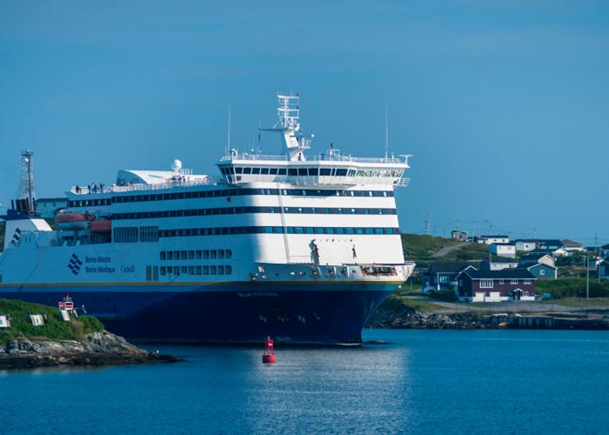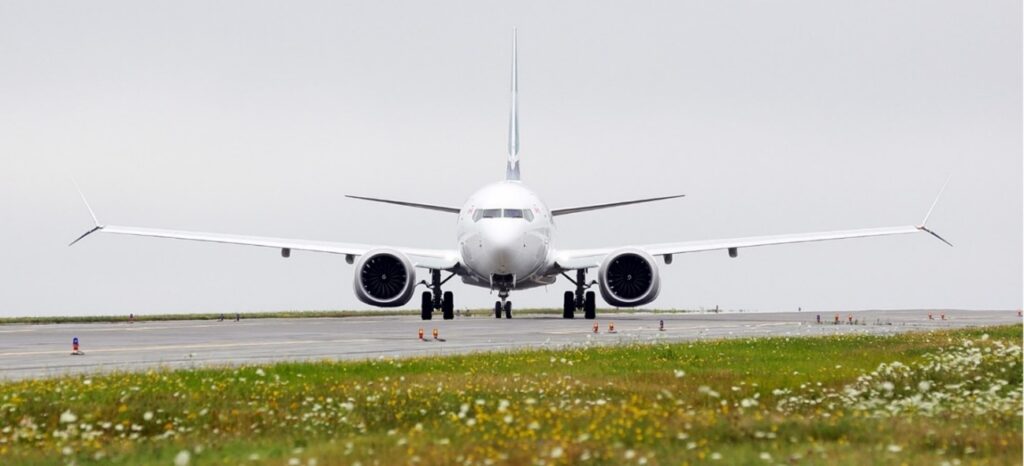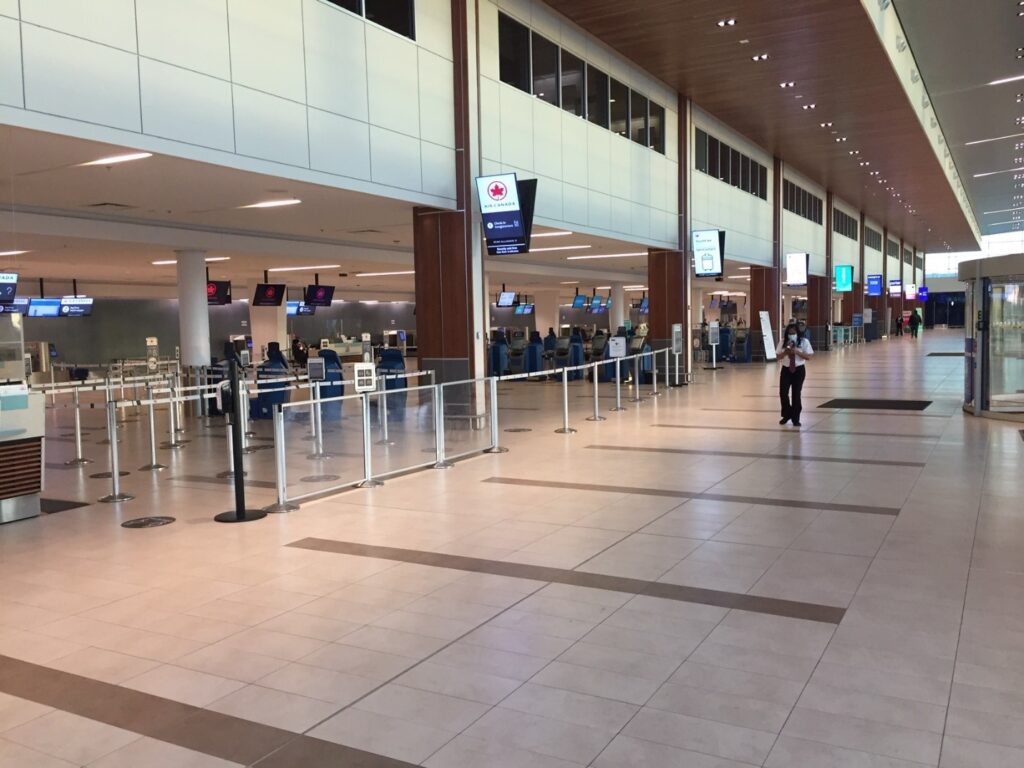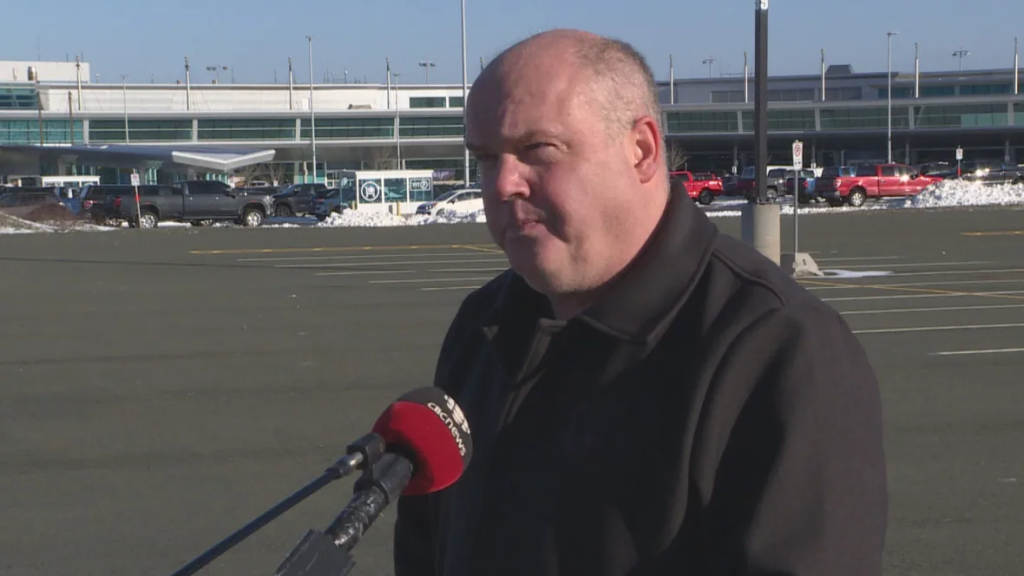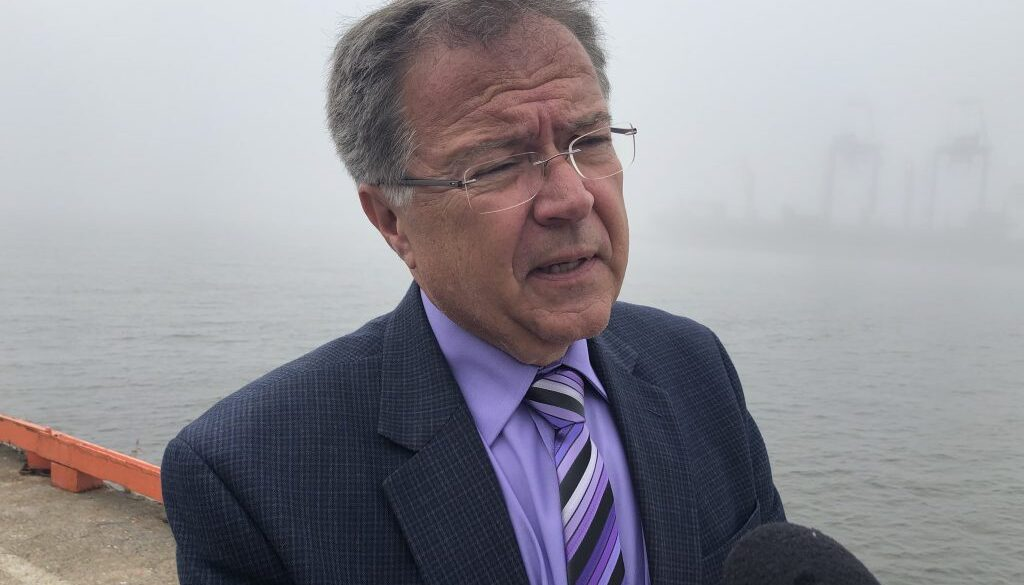Welcome back to Atlantic Transport News! Summer is moving along quickly, and with lots of other things going on outdoors, we’ve decided to combine our July and August news into a single issue. Hopefully you’re able to peruse these stories while relaxing and enjoying the summer days, perhaps even back out and travelling around the country.
Here’s a look at what you’ll find in this edition:
- VIA woes – Summer travel returns, but delays abound
- VIA Annual Public Meeting – No imminent improvements for Atlantic Canada
- Value for money an issue for Marine Atlantic users
- PEI ferry burns, substitute vessel arrives from Quebec
- Details scanty about WestJet refocus
- Public Transit – Staffing issues create headaches, but ridership rebounds
- Transport Action Canada launches Canada-wide motorcoach survey
VIA WOES – SUMMER TRAVEL RETURNS, BUT DELAYS ABOUND

The summer of 2022 has brought a full return of VIA Rail service in Atlantic Canada, even if only at the ever-inadequate tri-weekly schedule of the Ocean, and the travelling public seems to have returned to fill the trains. No doubt buoyed by the resurgence of travel across the board, coupled with delays at airports and shortages of rental cars, the majority of departures in both directions have been nearly or entirely sold out.
Despite the evident demand, VIA has been slow to add capacity. More Chateau sleepers have been added to the Ocean train, but on-board accounts suggest that often only one of these cars is actually in revenue service. This appears to be tied to staffing issues, and VIA’s inability to provide sufficient crew to staff any additional cars that could be added. No doubt the long layoffs and painfully slow return to service, which included an exhausting on-train staff schedule with extended time away from their home terminal, have made it increasingly difficult to retain and attract new on board crews.
Delays have become a chronic issue through the course of the summer. Most recently, track work projects on the Mont Joli subdivision (Mont Joli to Campbellton) are causing routine delays in both directions, typically of at least 2 hours. A notice on Reservia reads “Due to operational issues experienced by the railway infrastructure owner, trains 14 and 15 are expected to incur a delay en route and upon arriving at final destination. We apologize for any inconvenience this may cause.” Connections in Montreal to trains 65 (for Toronto) and 35 (for Ottawa) have been removed from the reservations system for the time being, recognizing the high likelihood of missed connections. This work is anticipated to be complete by September, but it is certainly an inconvenience during some of the busiest travel time of the year.
Easily the worst example of delays and staffing issues took place on July 22, 2022. VIA 15, scheduled to depart Halifax that day at 13h00, had its departure time pushed back due to “operational issues”. Anecdotal reports from passengers suggest that there was no qualified Service Manager (SM) available to work, which put VIA in the position of either having to find another available SM (a challenge with schedules and few available qualified employees), or run the train without an SM – something the on board employees and union would oppose, and also something that would require authorization from Transport Canada. The result was a cascade of rolling delays that extended, hour by hour, through the entire afternoon and evening. Passengers were provided with extremely little information about what was taking place, and little indication of what their options might be in the long run.
Eventually, passengers in Halifax were allowed to board the train, but a call was made late at night that the train would be cancelled. Passengers were allowed to stay on board overnight, but by the morning they were left to fend for themselves. Refunds and travel credits were issued, but there was little to no assistance with any alternate travel arrangements. Passengers at some stations farther along the line may have been bussed, but this isn’t entirely clear. The train deadheaded back to Montreal the next day, with crew members on board and no passengers.
More details about this experience can be found in this report from a veteran VIA traveller. With the trip proving to be this disillusioning for even a seasoned traveller, one can only imagine how much this experience would do to deter those trying out the train for the first time. It seems that VIA managed to avoid any seriously negative press for this incident, but that is likely just indicative of how miniscule their presence is in the Atlantic Canada transportation scene.
VIA RAIL ANNUAL PUBLIC MEETING – NO IMMINENT IMPROVEMENTS FOR ATLANTIC CANADA, BUT OPTIMISM FOR FLEET RENEWAL

VIA Rail’s Annual Public Meeting was held on August 9, 2022. You can watch the live stream of the public meeting at the YouTube link below.
As usual, VIA provided an opportunity for questions to be submitted in advance, and answered some of the most commonly asked questions in a separate Q&A Document.
There were a number of questions related to VIA’s Ocean service and the prospect of any improvements in Atlantic Canada. Unsurprisingly, there’s no indication of any plan to expand services – though there was at least some acknowledgement of the interest in increased frequencies within the region. Even less surprising, there was a further reiteration that any plan for the regional services pitched under the tenure of Yves Desjardins-Siciliano has been suspended, with infrastructure issues (i.e. the high demands from CN) cited as the reason for abandoning the project. On that infrastructure note, there are also no plans for work on the Newcastle Sub to improve trip times, though this would seem to be the most obvious way to speed up travel.
On a disappointing note for passengers, the Q&A confirmed that the Ocean will “continue to operate…without a dome car until further notice”, due to “various factors including operational and equipment considerations.” The equipment considerations may very well be related to the state of the electrical equipment and the ongoing need for refurbishment work. Skyline cars – the mid-train domes that would be most appropriate for the bidirectional Ocean train – have mostly not had any major refurbishment work in recent years, although they were included in VIA’s original plans for an update to the carriages on the service. It certainly seems possible that there may not be sufficient cars in decent condition to meet the demands of both the Canadian and Ocean. Regardless of the reason, this means that all passengers on the train will have to suse two Renaissance service cars instead, which are not as attractive.
Though there’s relatively little to be excited about in this update, there is at least a hint of optimism related to plans for much needed long-distance fleet renewal. In response to a question on the topic, VIA provided this answer:
“Long-distance and regional services are closely linked to our mandate, our mission, our vision and the fleet that runs on these routes will need to be replaced since it is no longer reasonable to extend its operational life.
For these reasons, we have submitted a business case to the federal government, and we look forward to working with the appropriate stakeholders in the Government of Canada during the evaluation of this business case.
The replacement of this fleet will allow VIA Rail to provide a more comfortable, reliable, accessible and sustainable travel experience all the while continuing to contribute to the tourism industry and regional economic development.
We look forward to sharing more details on this process in due course.”
VALUE FOR MONEY IS AN ISSUE FOR MARINE ATLANTIC USERS
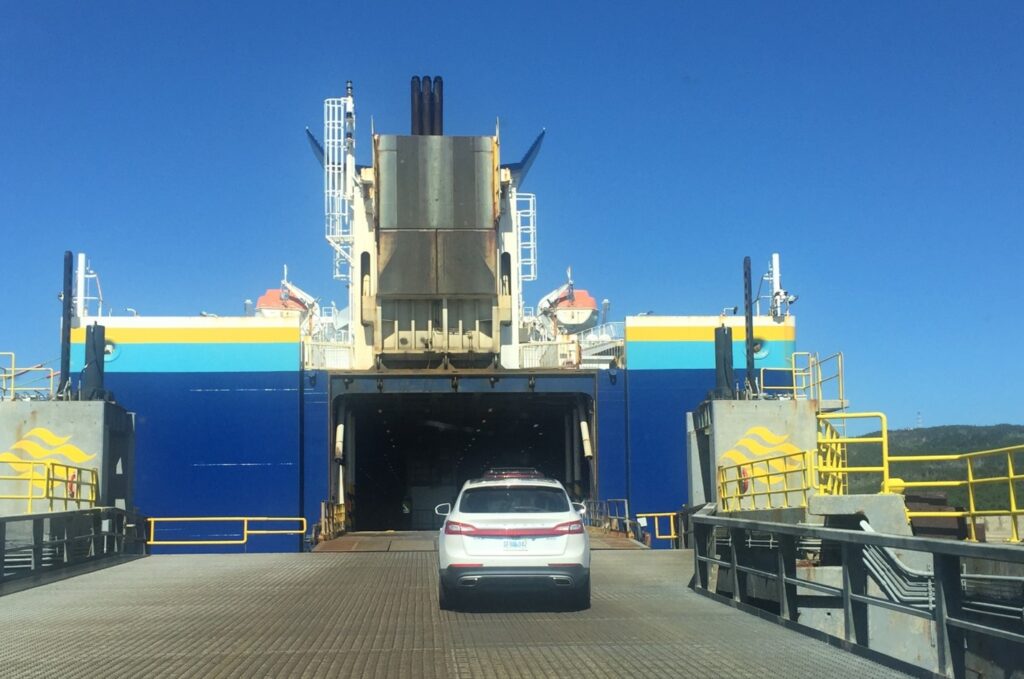
Fallout from the COVID-19 pandemic has apparently had a “statistically significant” impact on how the Marine Atlantic ferry service is perceived by its customers. The Crown corporation published the results of its most recent customer satisfaction survey in the July issue of its employee newsletter.
A random sample of between 100 and 200 customers each month is polled on the company’s behalf by Narrative Research, and the results have been encouraging – until recently. The three-month rolling scores from the May 2022 survey show a number of noteworthy declines that are unlikely to have occurred by chance, with a confidence level of 95%. Marine Atlantic is clearly concerned by the numbers, and management evidently hopes that sharing the data with employees will inspire them not to rest on their laurels in what is predicted to be the busiest tourist season in years.
The survey revealed that a respectable 77% of customers are highly satisfied with their ferry experience, but that’s down by nine percentage points from a year ago. Yet 95.6% of users would recommend Marine Atlantic to others – a statistic that changed very little year over year. In the area of reliability, 81.2% provided a positive rating, down 4.8% from 2021.
But the area where customers are most dissatisfied will come as little surprise. Only 60.1% of customers rate Marine Atlantic’s value for money positively. That’s down 11.4% from last year, and clearly reflects a growing public perception that the ferry rates are far higher than they should be.
Although there has not been an increase in passenger fares since 2019, over the past two decades ferry rates have risen at a rate far in excess of the cost-of-living index. It’s not a matter over which the Crown corporation has direct control, as the cost recovery target for the constitutionally-mandated service is dictated by the Government of Canada. It currently stands at 66% – far higher it was in years gone by. It’s an issue that Transport Action Atlantic has been passionate about for quite some time, and continued political pressure will be necessary to prevent further burdensome rate hikes in future years.
-Ted Bartlett
PEI FERRY BURNS, SUBSTITUTE VESSEL FROM QUEBEC ARRIVES
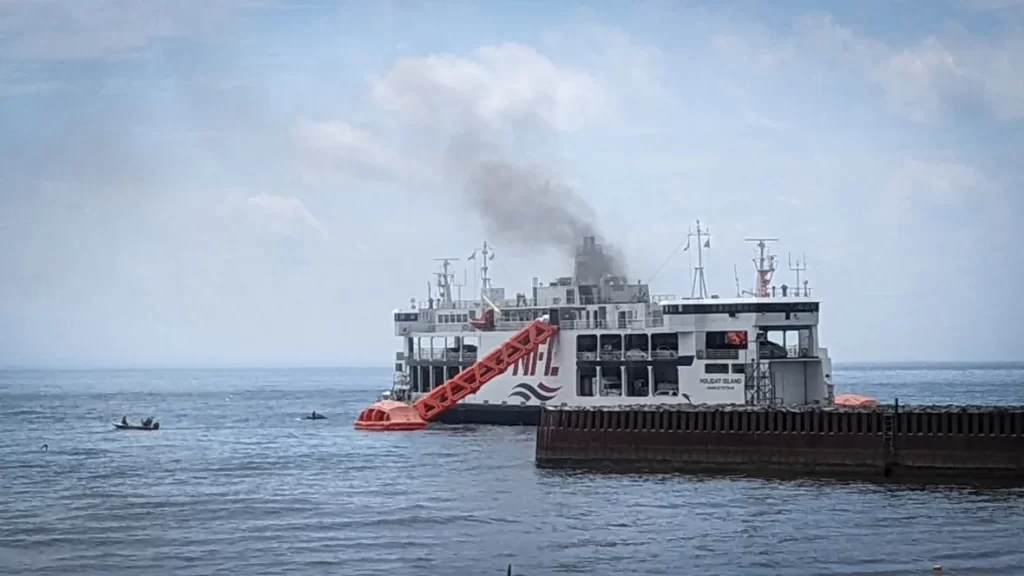
The MV Holiday Island, one of the two ferries plying the Northumberland Strait between NS and PEI, ran into serious trouble on July 22, as a fire broke out in the engine room shortly before arrival in PEI. All 225 passengers on board had to be evacuated, with the aid of the vessel’s lifeboats and some local fishermen. Fortunately, there were no injuries to passengers or crew. With the fire still burning, the vessel remained just outside of the harbour at Wood Islands for two days before the fire could be extinguished, and vehicles could finally be offloaded and returned to their owners. The vessel is now sidelined indefinitely, with the extent of the damage and potential for repairs in need of further evaluation.
With one vessel immediately out of service, Northumberland Ferries Ltd. (NFL) adjusted the sailing schedule to allow the MV Confederation to make more trips during the day and pick up some of the slack. A process was also launched to seek out a potential replacement vessel. In impressively short order, NFL was able to track down a suitable substitute vessel from Quebec. The MV Sareema I, a vessel built in Norway in 2010 and used by Société des traversiers du Québec (STQ) on the Traverse Matane – Baie-Comeau – Godbout crossing, travelled to Caribou NS for testing in the first week of August. If the tests go well and the vessel is able to function with the dock infrastructure, the vessel will enter service on the Northumberland crossing as early as mid to late August.

The MV Holiday Island was already slated for replacement in the 2019 federal budget, but delivery of a new vessel was not expected until 2027. At this stage, it isn’t clear if the Holiday Island will be repaired and returned to service, or if some sort of substitute arrangement will be made until its successor is delivered.
DETAILS REMAIN SCANTY ABOUT WESTJET REFOCUS
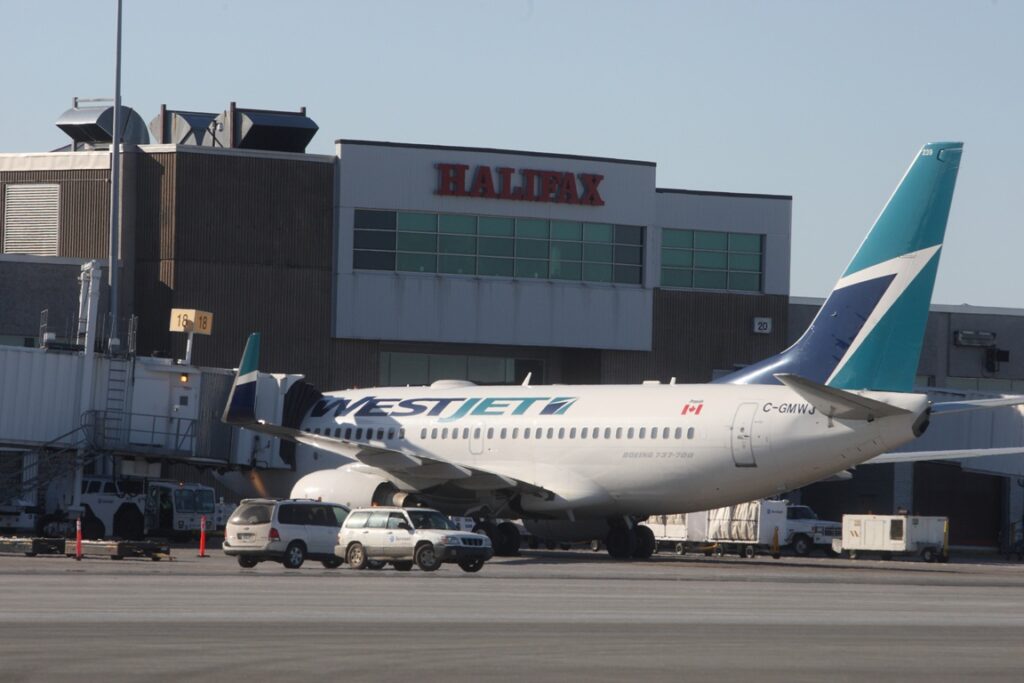
WestJet services to, from and within Atlantic Canada appear to be in for some significant changes, but the full extent of the airline’s planned refocusing of its operations remains unclear. Canada’s second-largest airline announced on June 16 that it plans to concentrate its routes and fleet on its home turf in Western Canada.
Chief executive officer Alexis von Hoensbroech, who joined the company in February, made the announcement following a strategic review. “We think the West has more room for growth for us that the East,” he told the Globe and Mail, announcing that the number of flights within eastern Canada will be reduced while schedules and capacity would be boosted in the airline’s western stronghold. The airline claims it will continue to be a national carrier with a significant presence in Eastern Canada, but primarily through direct connections to western cities.
Exactly what this all means for Atlantic Canada is still unclear, more than a month after the announcement. The original media release (which is no longer available on WestJet’s website) did say its regional fleet of Q400 turboprop aircraft would be “shifted and right-sized” to focus on Western Canada. As of this writing, the indefinite cancellation of the carrier’s services linking Fredericton, Charlottetown and Sydney with Toronto effective in October are the only announced changes for the region. But other routes such as Halifax-St. John’s and Moncton-Toronto also use the WestJet Encore turboprops and could potentially be affected as well. And there’s also the question of the trans-Atlantic flights to and from Halifax. This summer has seen the return of direct services from YHZ to London Gatwick, Dublin, Glasgow and Paris. It remains uncertain whether these will survive the refocusing exercise. It’s already known that two of those routes will be ending earlier than their originally-planned October dates, attributed to operational and crewing challenges that are widespread throughout the commercial aviation industry.
Halifax Airport spokesperson Tiffany Chase confirms that no detailed longer-term plans have yet been forthcoming from WestJet. “We remain in discussions with them to identify the opportunities and benefits Halifax Stanfield provides as a strong partner and market going forward, in alignment with their new strategy, as we have successfully done in the past,” she wrote in an e-mail to TAA. “We can’t say what routes may be affected by their new strategy in future or what new opportunities will emerge – it’s early days on those discussions. I wouldn’t want to speculate at this point about the impact on routes that have been traditionally served by WestJet in our market or who else may fill any gaps.”
One player that may be looking for opportunities arising from WestJet’s new strategy is St. John’s-based PAL Airlines. The growing regional carrier now boats a fleet of seven Q400 planes, as well as six smaller aircraft. PAL’s acting director of business development Stephen Short says their concentration is on what he calls “underserved markets” – one of which is connecting New Brunswick and Newfoundland.
Their plans were disrupted by the pandemic, but the airline is now flying direct between Moncton and St. John’s six days a week, with the same aircraft also providing non-stop Moncton-Ottawa service. In addition there are three round trips per week between YQM and YYT with a stop at Deer Lake, and tri-weekly service between Fredericton and St. John’s, also stopping at YDF.
He’s not disclosing any other opportunities PAL might be eyeing, but points out that they have interline agreements with both major national carriers, enjoy good relationships with airports throughout the region, and are nimble enough to adapt quickly to changing market conditions. He adds that they are committed to further growth in New Brunswick, and capacity and schedules will be dictated by demand. Current schedules are in effect until mid-October.
Meanwhile, the region’s largest airport, Halifax Stanfield, has been spared most of the chaos that has plagued major hubs in Canada and around the world. Mountains of lost or unclaimed luggage and hordes of angry passengers have not been a common sight anywhere in Atlantic Canada, but travellers in this part of the country have not been entirely immune from domino effects resulting from crew shortages and terminal overload at Toronto Pearson and Montreal Trudeau.
Tiffany Chase says YHZ views the rebound in traffic as encouraging, despite the uncertainty about WestJet’s future plans. While both major airlines have cut frequencies on some routes as they grapple with crewing and other challenges, seat capacity reduction has been to some extent offset by the use of larger planes.
“We are excited to see more people travelling through the airport again, for leisure, reconnecting with family and friends, and for business purposes, and we will continue to do everything we can to attract and retain air service connections to key markets and destinations around the world for the benefit of our communities,” she said. Passenger traffic through YHZ in June totalled 333,731, about 15% fewer than the same month in pre-pandemic 2019, but up astronomically from the 21,645 passengers handled in June of 2021.
-Ted Bartlett
PUBLIC TRANSIT: STAFFING ISSUES CAUSE HEADACHES, BUT RIDERSHIP CONTINUES TO RETURN
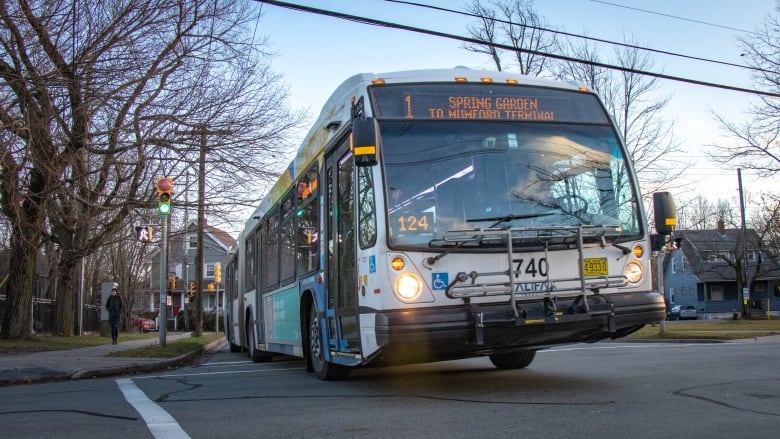
The summer of 2022 has seen a resurgence of travel and increasing numbers of passengers on public transit systems, but this positive trend has run up against serious staffing issues across the transportation sector. Labour shortages are an issue in virtually every industry at the moment, but transit systems seem particularly hard hit, owing in part to the turbulent years of 2020-2021 and challenging working conditions that persist today. The union representing Halifax Transit drivers has cited poor pay and a demanding work environment, including frequent mandatory overtime, as factors that have left the agency critically short of front line staff.
Halifax Transit has been forced to continue cutting departures, with cancelled trips now in place on more than 50 routes in the system. Though these service cuts have been planned to try to minimize disruptions by focusing on lesser used departures, they are still having a disruptive impact on the travelling public. Halifax Transit has also postponed all but one of the route changes planned for later this year under the Moving Forward Together Plan.

Despite these challenges, with high gas prices and a continuing return to more aspects of pre-pandemic life, transit agencies throughout the region have been seeing ridership return. Metrobus in St. John’s, NL reported record rider numbers in June, and Greater Moncton’s Codiac Transpo is seeing the same trend as well. Operations manager Alex Grncarovski attributes the upswing to several factors, including the return of many people to their normal workplace, and the high price of gasoline being an incentive to leave cars at home. More frequent service on most routes is also no doubt a contributing factor.
Codiac is also exploring the possibilities for bus electrification, with a study expected to be completed by early 2023. The consultants will determine what’s needed in the way of infrastructure, and identify next steps to get to that point. In the meantime the agency is also having suppliers bring their buses to Moncton for evaluation, including a vehicle that St. John’s is considering for purchase. “Exciting times,” Mr. Grncarovski says.
Back in Halifax, a long-anticipated electronic fare payment system is finally on the way, with a tender out for a mobile fare payment system that could be in place in a few months time. The first phase will involve a mobile app that passengers can use to pay fares and display proof of payment to the driver on boarding. Later phases will move to a more comprehensive electronic fare system, allowing tap card payments on the bus.
TRANSPORT ACTION CANADA LAUNCHES CANADA-WIDE MOTORCOACH SURVEY
Transport Action Canada is inviting Canadians to participate in a research project regarding the public transport needs of Canadians and the state of motorcoach services in Canada following the demise of Greyhound and the impact of the pandemic on Canadian motorcoach operators.
Please take a few minutes to fill out the survey with the information you feel comfortable sharing about your use of motorcoach services, and share this with others across your networks who may also be interested in sharing their views.





